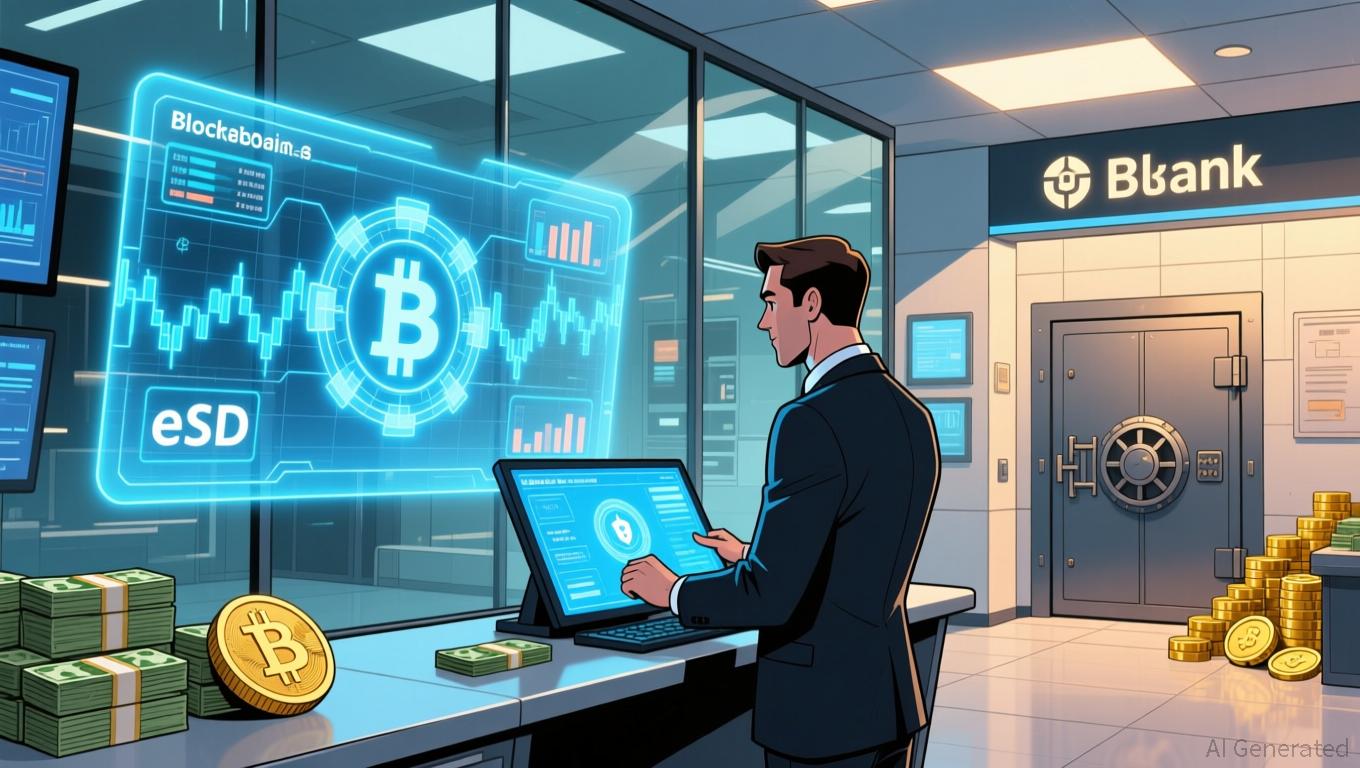Zcash Halving: How Limited Supply and Market Sentiment Drive Price Increases in Specialized Cryptocurrencies
- Zcash's halving reduces miner rewards every four years, mimicking Bitcoin's deflationary model to lower annual inflation from 12.5% to 1% by 2032. - The 2024 halving triggered a delayed 92% price surge in Q4 2025, driven by regulatory clarity, institutional adoption (e.g., $137M Grayscale Trust), and network upgrades. - Privacy features (27% shielded transactions) and zk-SNARKs attract investors seeking financial privacy, while institutional infrastructure boosts adoption and price stability. - Risks inc

The
The Mechanics of Scarcity
Zcash implements a halving event about every four years, slashing block rewards by half in a manner similar to Bitcoin’s deflationary approach. The initial halving in November 2020 reduced rewards from 6.25
This systematic reduction in new supply creates a deflationary effect as the total cap of 21 million ZEC approaches. However, market reactions are shaped by more than just code. The collective anticipation of increased scarcity often intensifies the effects of halvings. For instance, the 2024 halving initially saw little price movement, but it ultimately set the stage for a 45% rally in Q4 2025. This lag highlights a key point: the impact of halvings is often delayed, driven by evolving expectations and real-world adoption rather than immediate market response.
Investor Psychology: The Unseen Catalyst
Zcash’s unique role as a privacy-focused coin adds complexity to its price behavior. Unlike
This blend of transparent and private transactions shapes a distinct investor mindset. Those prioritizing privacy view Zcash as protection against surveillance, while institutional investors are attracted by its advanced cryptography (zk-SNARKs) and adaptable regulatory stance. The introduction of Grayscale’s Zcash Trust in late 2025, which accumulated $137 million in assets, highlights this trend. Such institutional involvement reduces available supply, easing selling pressure and supporting price growth.
The 2024 Halving: A Case Study in Delayed Impact
Initially, the November 2024 halving seemed to have little effect, with ZEC trading between $412 and $480. However, this period set the stage for a significant rally in Q4 2025. Several developments contributed to Zcash’s breakout:
1. Regulatory Clarity: Clearer guidelines in the U.S. and EU reduced uncertainty for privacy coins.
2. Institutional Infrastructure: Tools like the Zashi mobile wallet and CrossPay feature made it easier for institutions to participate.
3. Network Upgrades: Planned transitions from PoW to PoS improved scalability and reduced environmental impact.
These advancements reinforced Zcash’s long-term value, shifting market sentiment from doubt to confidence. The 92% price increase in 2025 demonstrates this change, with ZEC outperforming other privacy coins such as Monero and
Investment Implications and Risks
Zcash’s halving schedule presents both potential rewards and significant risks for investors. The upcoming 2028 halving, projected for late that year, will further lower inflation to 0.5%, possibly intensifying scarcity-driven demand. However, three main risks persist:
1. Regulatory Volatility: Privacy coins continue to face scrutiny in major jurisdictions. Any negative regulatory shift could prompt sharp declines.
2. Competition: Innovations like Bitcoin’s Taproot and Ethereum’s privacy-oriented layer-2 solutions may threaten Zcash’s market position.
3. Macroeconomic Factors: Rising interest rates or a prolonged downturn in the crypto market could reduce interest in niche assets.
Conclusion: A Calculated Bet on Privacy
Zcash’s halvings are more than technical adjustments—they serve as psychological inflection points that reshape the market. Although the 2024 halving initially appeared uneventful, its delayed effects highlight the importance of investor expectations. For those prepared to manage regulatory and economic uncertainties, Zcash stands out as a privacy-centric asset with a deflationary structure, growing institutional support, and a clear path toward scalability.
Investors are advised to take a long-term perspective on Zcash, focusing on its role in a world increasingly concerned with privacy, rather than short-term price swings. As the 2028 halving draws near, the real question may not be if Zcash will appreciate, but by how much, in an era of heightened financial surveillance.
Disclaimer: The content of this article solely reflects the author's opinion and does not represent the platform in any capacity. This article is not intended to serve as a reference for making investment decisions.
You may also like
Supervised Blockchain Banking Connects Traditional Finance and Digital Assets
- Telcoin becomes first U.S. digital asset bank with Nebraska regulatory approval, launching eUSD - the first bank-issued stablecoin backed by U.S. deposits and treasuries. - JPMorgan's JPMD deposit tokens enable instant 24/7 transactions on Base blockchain, offering yield-generating digital claims on actual bank deposits unlike traditional stablecoins. - Thunes' blockchain infrastructure solutions bridge digital-physical finance gaps, supporting $10B market growth by enabling seamless fiat-digital asset c

Bitcoin News Update: Bipartisan Deal Faces Delays Due to Healthcare Disagreements and Trump Tariff Challenges
- U.S. lawmakers near bipartisan deal to end 40-day government shutdown, funding federal operations through January 30 with ACA tax credit votes and Trump's reversed firings. - House Democrats split over healthcare provisions, while Senate faces hurdles in passing funding package due to healthcare disputes and procedural challenges. - Markets react mixed: crypto surges on shutdown resolution optimism but ETFs see outflows, while semiconductors face volatility amid analyst price target adjustments. - Prolon

MMT Token Experiences Rapid Price Increase: Analyzing Blockchain Governance and Factors Driving Market Sentiment
- MMT Token surged 4,000% during its 2025 TGE before a 70% correction, driven by governance innovation and market sentiment shifts. - Momentum Finance's veMMT model locks tokens for governance rights, while buybacks using protocol fees create deflationary pressure. - Institutional backing ($14.5M IDO) and cross-chain partnerships with Wormhole/LiFi boosted MMT's appeal as a liquidity engine for Sui's ecosystem. - Volatility risks persist due to macroeconomic factors, security concerns, and unproven scalabi

Modern Monetary Theory and the Transformation of Cryptocurrency Valuations: Fresh Momentum or a Risky Gamble?
- MMT-driven fiscal expansion by central banks reshapes crypto valuations, with 55% of hedge funds holding digital assets by 2025. - Algorithmic stablecoins like USDsd expose governance flaws during monetary expansion, while Bitcoin faces inflation-paradox challenges. - CBDCs emerge as government-backed alternatives, prioritizing stability over innovation amid regulatory scrutiny of decentralized models. - MMT's dual impact creates opportunities for institutional adoption but risks centralizing crypto thro
